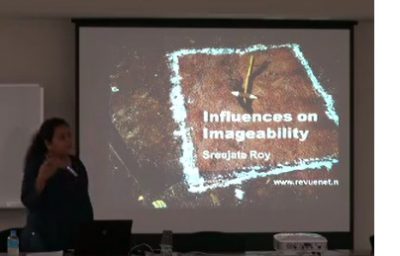| 教員/講師名 | Sreejata Roy(an Mphil in media art from the Coventry School of Art and Design) |
|---|---|
| 開催年度 | 2011年度 |
| 開催日 | 2011/10/06 |
講演者 Sreejata Roy
Sreejata Roy has an Mphil in media art from the Coventry School of Art and Design, and has been awarded prestigious scholarships (Overseas Research Scholarship, U.K.; National Scholarship, India) as well as participated in many national and international exhibitions, residencies and workshops. Sreejata is drawn to community-related projects, and for the past five years has focused on exploring the new labour practices that have developed in the neo-liberal political/economic environment as an expression and consequence of globalization. She currently works for the Ankur Society for Alternatives in Education, a Delhi-based NGO, where she continues her exploration of the relationship of art and public space through a variety of media forms, in collaboration with young people from working-class communities.
テーマ One of the starkest visual outcomes of contemporary neo-liberal political environments and economic policies that have catalyzed globalization on an unforeseen and unimaginable scale is the relentless mutation of metropolitan landscapes all over the world. Urban geographies are being rapidly and permanently transformed to accommodate the ever-expanding construction of skyscrapers, corporate offices and shopping malls. The traditionally public, historical and ‘green’ spaces in cities are encroached upon and appropriated, shrinking and disappearing as state property is sold developed into commercial mega-projects for private business interests. The migrant working class is also a subject to various powerful modes of alienation, even while the city enlarges these communities’ frames of reference, dismantles provincial and rural prejudices, offers a range of new affiliations and professions, and new possibilities of individual freedom. And at the other end of the scale, cities themselves bloat into unsustainable entities via the influx of millions of impoverished rural migrants, who create their own precarious settlements, infrastructure and relational circuits in whatever corner they can find.
プログラムの詳細はこちらのチラシをご覧ください。 |
|
